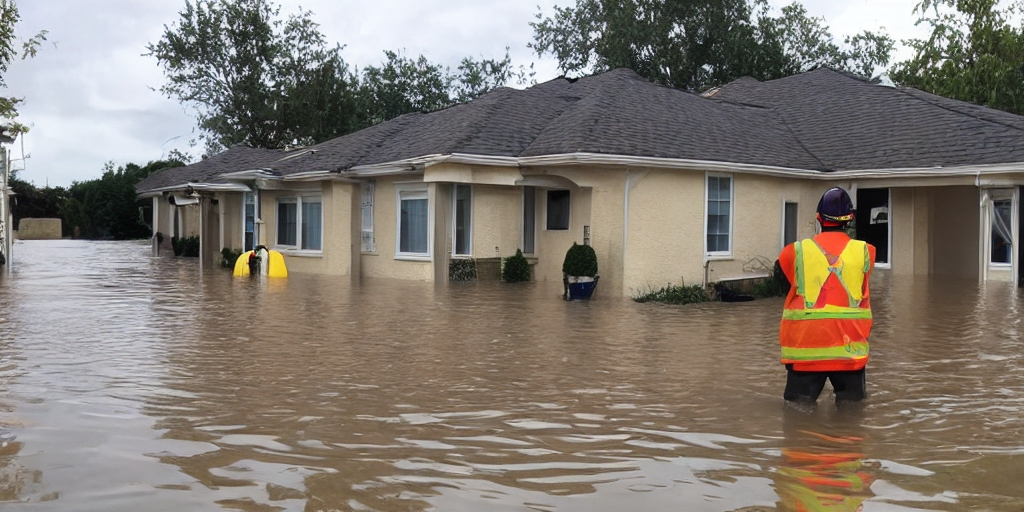In times of unexpected disasters such as floods, emergency flood restoration services become crucial for homeowners and businesses alike. Floods can cause extensive damage to properties, leading to structural issues, mold growth, and health hazards. Prompt and efficient restoration is essential to mitigate the impact of flooding and restore the affected property to its pre-loss condition. In this comprehensive guide, we will delve into the process of emergency flood restoration services, addressing common questions and concerns.
Understanding Emergency Flood Restoration Services
How do you Restore Flood Damage?
The process of emergency flood restoration services begins with a thorough assessment of the damage. Trained professionals evaluate the extent of the flooding, identifying areas that require immediate attention. This assessment helps in devising a tailored restoration plan to address specific needs.
The restoration process typically involves the following steps:
- Water Extraction: Utilizing advanced equipment, such as pumps and vacuums, professionals swiftly remove standing water from the premises. This step is crucial in preventing further damage and minimizing the risk of mold growth.
- Drying and Dehumidification: After water extraction, the affected areas are dried using industrial-grade dehumidifiers and air movers. This helps in reducing moisture levels, preventing secondary damage, and promoting a swift restoration process.
- Cleanup and Sanitization: Floodwaters often carry contaminants and pathogens, posing health risks to occupants. Professional restoration teams thoroughly clean and sanitize the affected areas, ensuring a safe and hygienic environment.
- Structural Repairs: Damaged structures, such as walls, floors, and ceilings, are repaired or replaced as necessary. This step aims to restore the structural integrity of the property and prevent further deterioration.
- Mold Remediation: Moisture from floods creates an ideal environment for mold growth. Experienced restoration teams conduct mold remediation procedures to eliminate mold spores and prevent recurrence.
- Restoration and Reconstruction: Once the property is thoroughly cleaned and dried, restoration experts proceed with rebuilding damaged areas to their pre-loss condition. This may involve various tasks, such as painting, flooring installation, and carpentry work.
Also Read: Emergency Flood Restoration Services: Restoring Your Property After Disaster Strikes
Does Servpro Fix Leaks and Burst Pipes?
Yes, Servpro offers comprehensive emergency flood restoration services, including the repair of leaks and burst pipes. Leaks and burst pipes can cause significant water damage to properties, necessitating immediate attention. Servpro restoration teams are equipped to handle various types of water damage situations, utilizing advanced techniques and equipment to address leaks and burst pipes effectively.
What is Servpro Mitigation?
Servpro mitigation refers to the proactive measures taken to minimize the impact of water damage and prevent further destruction. Mitigation efforts focus on swift action to control the spread of water and mitigate associated risks. Servpro restoration teams prioritize mitigation strategies to safeguard properties and expedite the restoration process.
Exploring Emergency Flood Restoration Services Cost

The cost of emergency flood restoration services can vary depending on several factors, including the severity of the damage, the size of the property, and the extent of restoration required. While every situation is unique, homeowners and businesses can expect certain cost considerations:
- Extent of Damage: Properties with extensive flood damage may incur higher restoration costs due to the need for more extensive repairs and cleanup efforts.
- Water Extraction and Drying: The cost of water extraction and drying services is determined by the volume of water present and the equipment required for effective removal and drying.
- Cleanup and Sanitization: Thorough cleanup and sanitization are essential for restoring a safe and hygienic environment. The cost of these services may vary based on the extent of contamination and the necessary sanitization measures.
- Structural Repairs and Reconstruction: Repairing damaged structures and rebuilding affected areas contribute to the overall cost of emergency flood restoration services. The complexity of structural repairs and the materials involved influence the cost of restoration.
- Mold Remediation: Addressing mold growth adds to the total cost of restoration. Mold remediation involves specialized procedures to eliminate mold spores and prevent recurrence, contributing to the overall restoration expenses.
Also Read: Emergency Flood Restoration Services: Restoring Your Property After Disaster
Conclusion
In conclusion, emergency flood restoration services play a vital role in mitigating the impact of floods and restoring properties to their pre-loss condition. With prompt action and professional expertise, homeowners and businesses can effectively address water damage and ensure a swift restoration process. Companies like Servpro offer comprehensive restoration services, including water extraction, drying, cleanup, and reconstruction, to help clients navigate the challenges of flood damage. By understanding the restoration process and associated costs, property owners can make informed decisions and expedite the recovery process.










